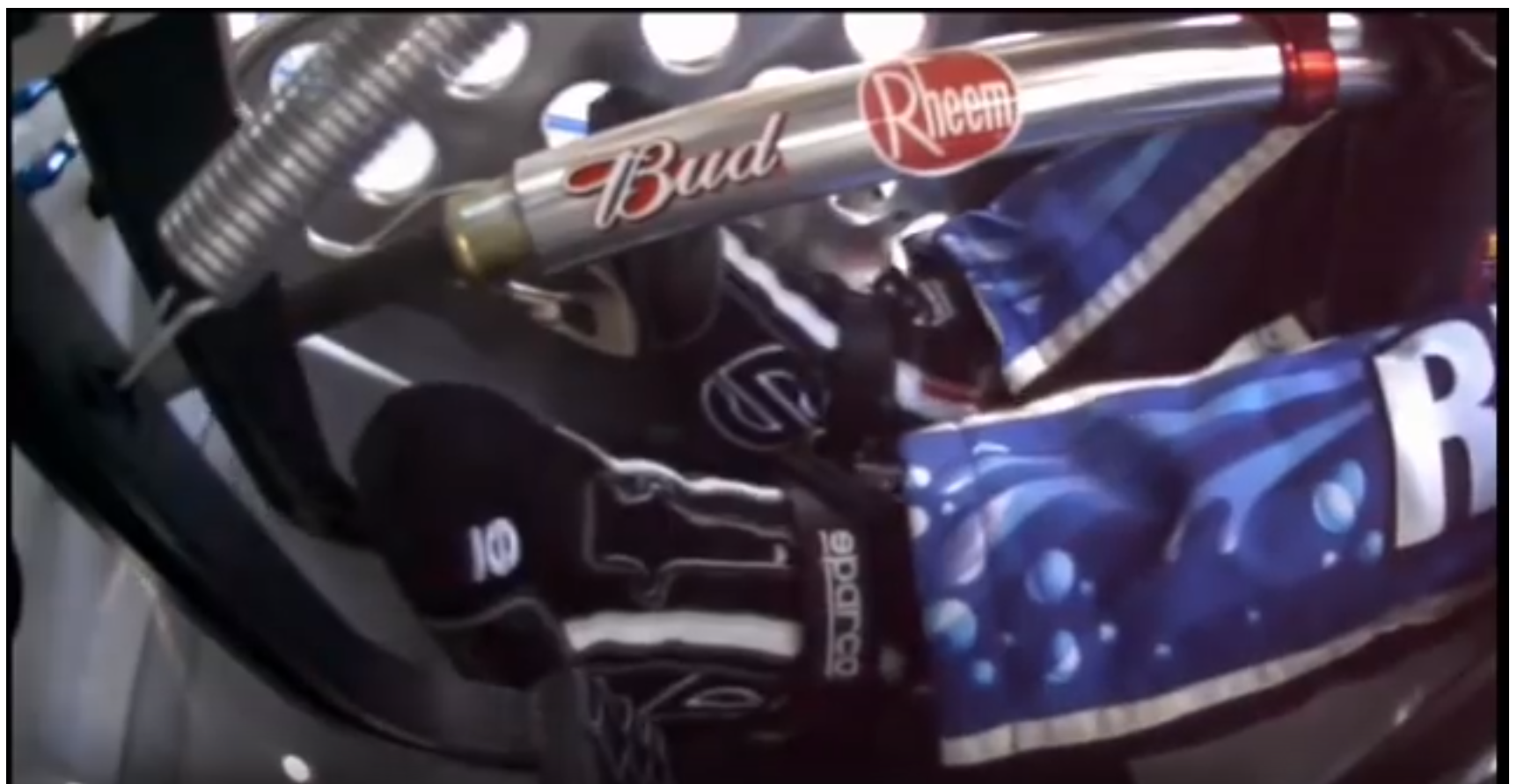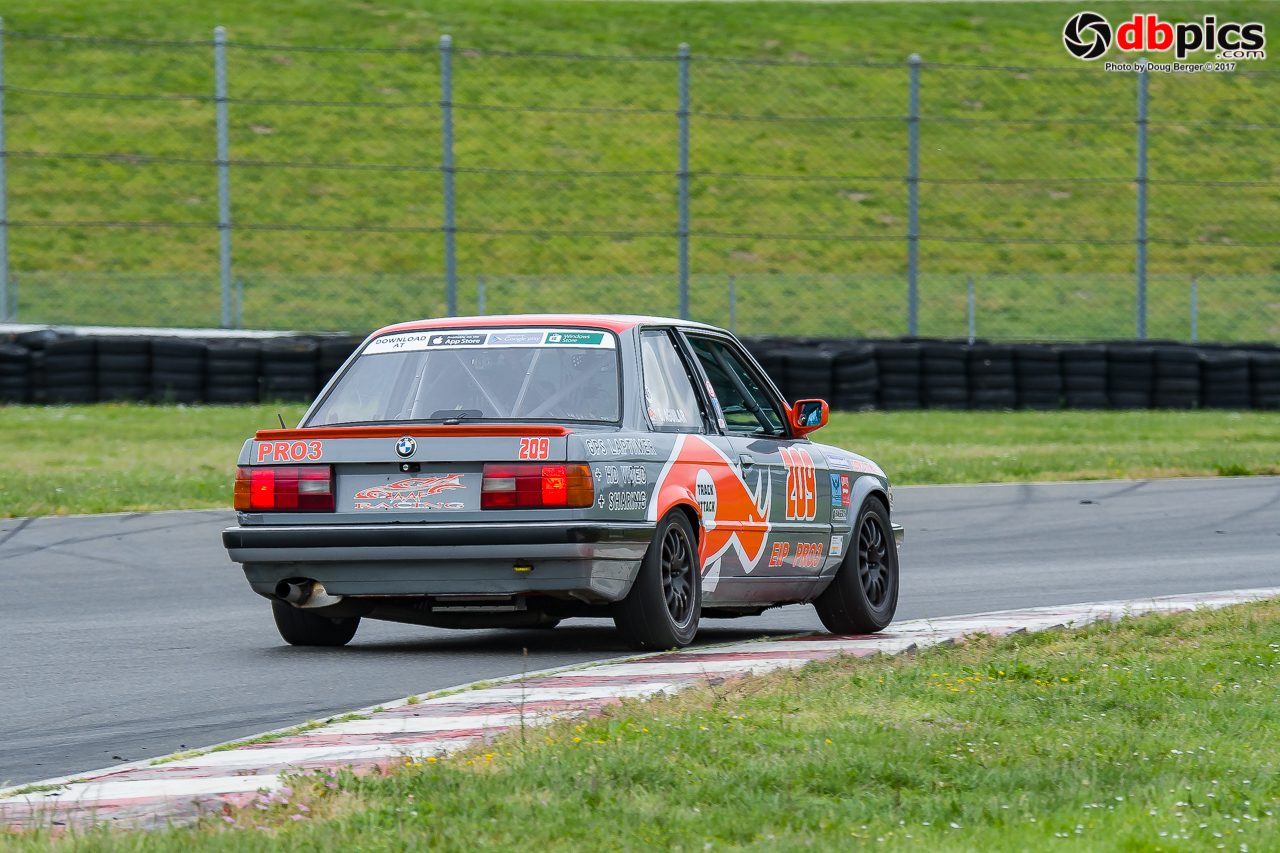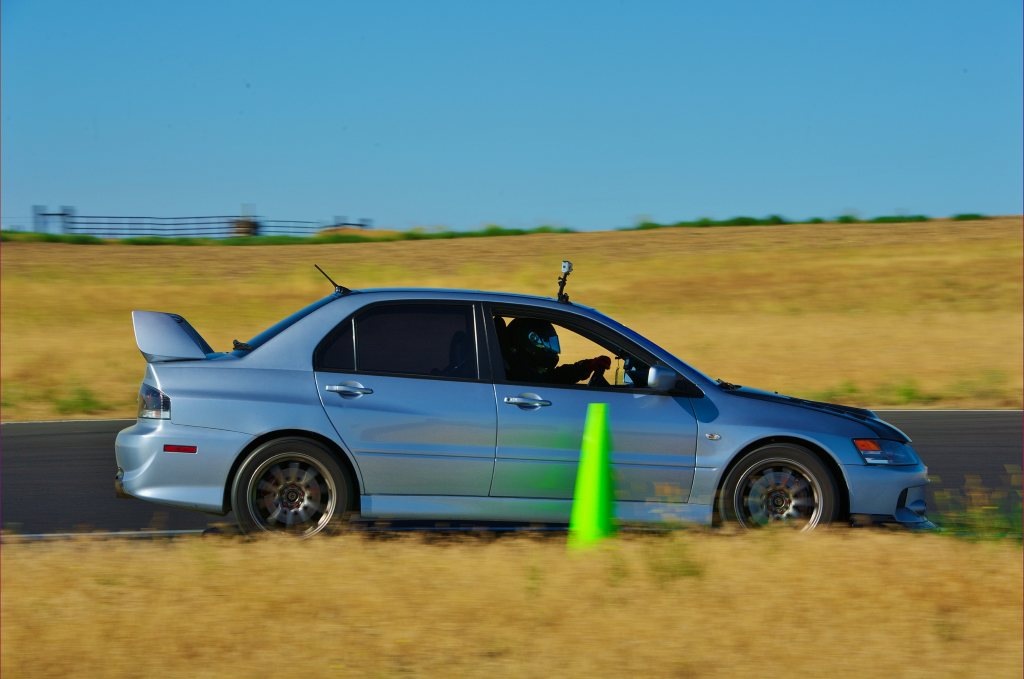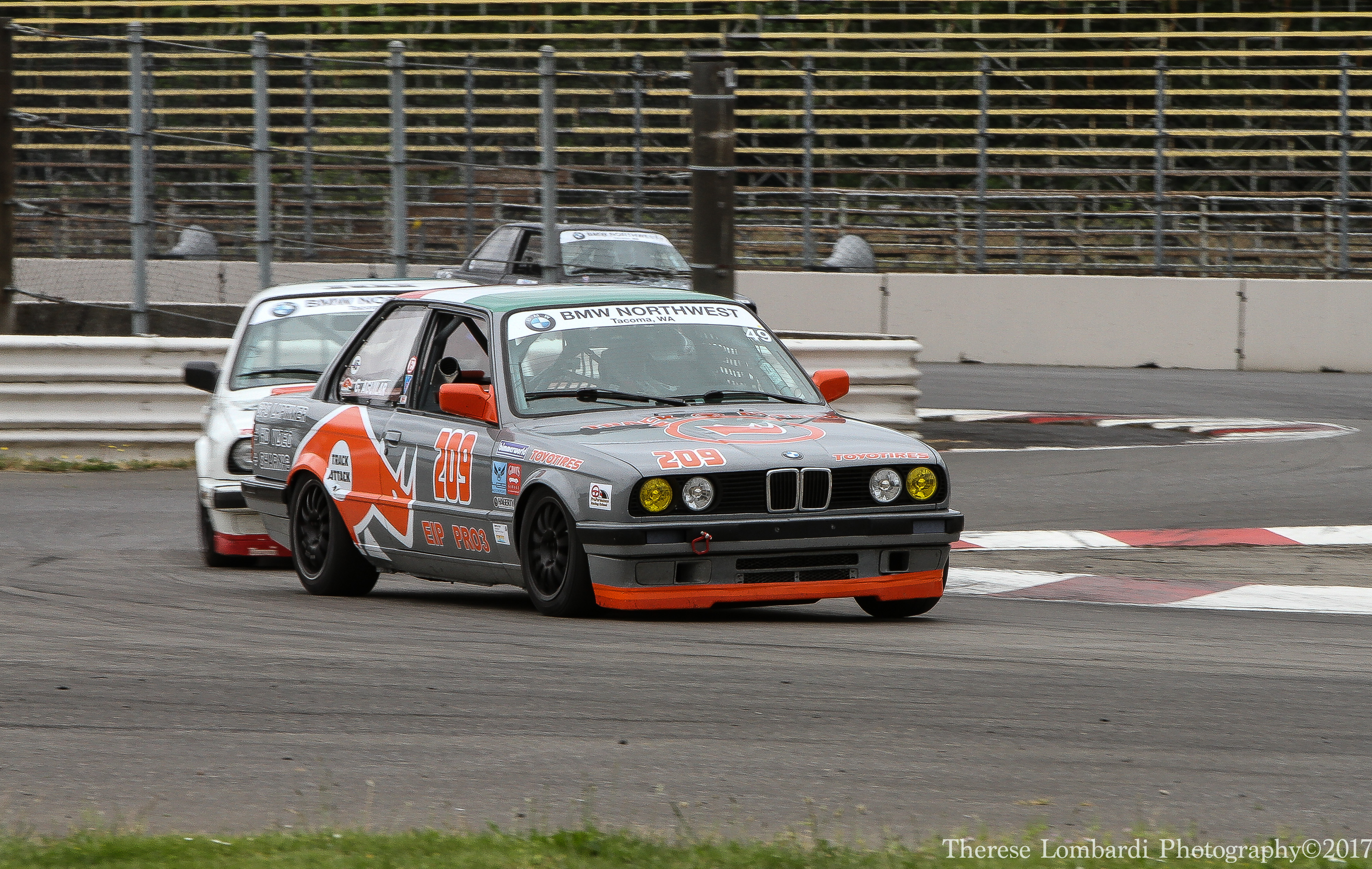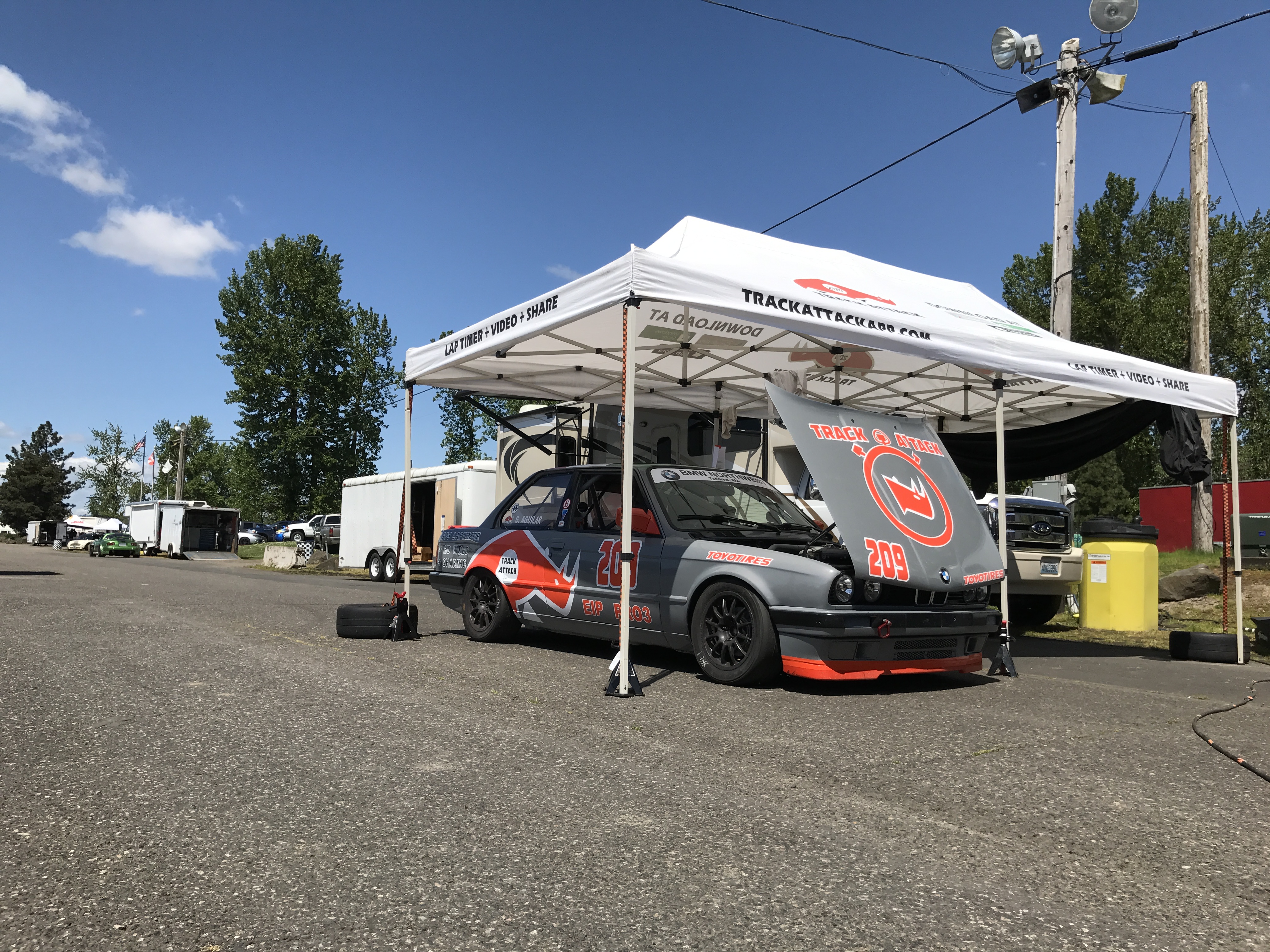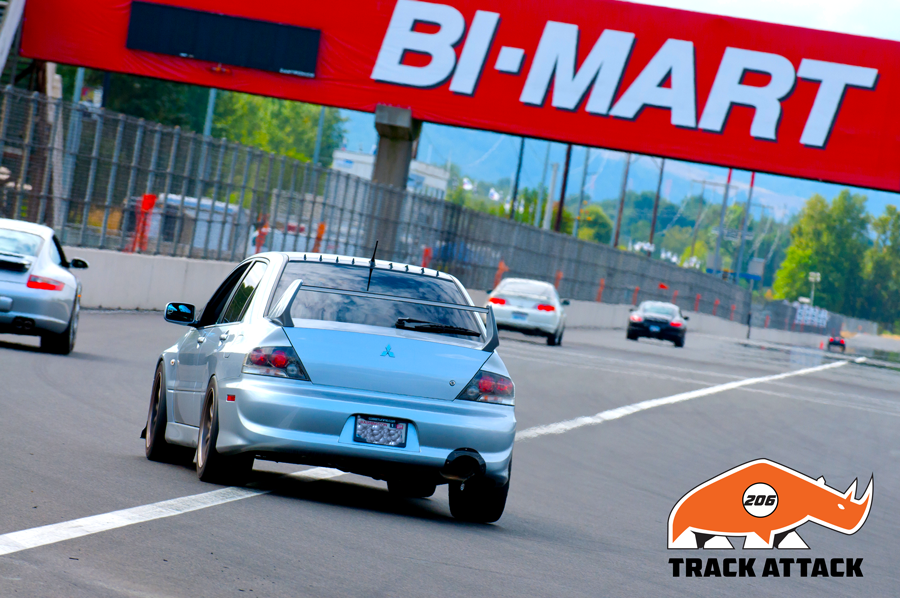
In a couple weekends, we’re headed back to Portland International Raceways and the first time I’ll get to drive the track for more than one session (in real life) this year and since I was on the Speed Secrets Podcast, earlier in the spring. I got some live coaching from Ross Bentley and have been excited to implement the tips I heard. Check out the podcast episode here and subscribe – it’s an awesome podcast with a wide variety of guests and every time, I learn a ton.
So let’s take a lap around the track and go through each sector as defined by the sectors on Track Attack. Below we’ll be using illustrations from real data from a pair of front-running “spec” racing class cars: my PRO3 and Will Schrader’s Spec Miata. Both are considered low-power momentum cars but there is enough power and weight difference you’ll see different things happening.
If you are a Spec Miata or PRO3 driver in the Pacific Northwest (or have similar cars), you can request to join the respective teams on Track Attack and get access to the session data that we’re using in these examples. (Link to PRO3 data share team and Northwest Spec Miata Tour)

Elevation change: None
PIR is like the Lime Rock Park of the west coast. In the chicane configuration, there are 7 right hand turns, compared to 2.5 left hand turns. But unlike Lime Rock, the elevation change is near zero. Check out this video where the data overlay shows the elevation change – there is just under 10 feet of total elevation change.
No real elevation change but there are still some tricks on banking that the track holds.
Segment 1: The festival chicane
The first segment starts at the start/finish line, of which the speed that is carried before the first braking zone is determined heavily by the exit out of T12 on the previous lap and if you might have caught a draft down the front straight.
Braking for T1 will depend on the car and whether its a qualifying lap or a race lap. In a PRO3 car and a qualifying lap, you can hit the brakes hard right after passing the 400 board and what ends up being right before the 300 marker. Note, this is hard to replicate lap after lap. After hitting the brakes hard, start coming off of them and you should already be looking for the apex of T1. It’s a good practice to put the right-side tires on the FIA curbing at the apex of T1 and even dropping a tire inside of the curbing isn’t bad but puts more stress on the suspension components.
Think about this: When are you releasing the brakes as you enter the corner for T1? Play around with that.
You’ll want to take a line where you can hit T2 with a late apex. Why? There’s a decent straight-away from full-throttle at the exit of T2, all the way until T4. Focus on doing what you can to get to full-throttle as soon as you possibly can coming out of T2. Usually when I see data of someone really moving through this segment, it is all about the minimum speed they carry through T1 and how quickly they can get to full-throttle out of T2. Clearly, there is a trade-off here but that’s the trick – finding the right balance and compromise for you and your car.
Also, the steering input for the change in direction to turn for T2 is relatively abrupt and hard. Remember, slow speed –> fast hands, fast speed –> slow hands.

Segment 2: No rest – Attack!
Segment 2 includes T4 – T6 and is one of the areas that separates good from great laps. It can be easy to coast through this segment, but when you’re looking for the maximum lap time, you need to attack!

T4 is somewhat of a false apex – you don’t absolutely have to hit the curbing but the benefits of staying closer to the curbing is that you travel less distance and you have more room to catch the car, if and when the car is upset by the bumps. When you brake depends on your car but generally speaking, with the chicane, you can go pretty deep into the braking zone and brake pretty lightly relative to braking for T1.
Think about: As in segment 1, when are you coming off the brakes as you enter T4?
As you dive into the T4, the rear of the car may start sliding, which is a good thing! Use maintenance throttle to settle it down and slowly start going to full throttle or modulating accordingly. How much throttle you can give it will depend on the speed you carried through mid-corner and how well the rear-left suspension components are absorbing the bumps. There is a lot of load on that rear-left, all the way through the exit of T5. Is your suspension bottoming out?
As you approach T5, you’ll have to either breathe off the throttle to get the car to rotate or give it some very slight braking. Get turned in and hit that curbing for T5. Then give it as much throttle as it will take and let the car release to the driver’s left as you approach T6.
T6 has different schools of thought. One school says sacrifice the corner and run the shortest distance possible. The other says that you should hit the corner with a wide entry and get an amazing run towards T7, where you don’t flare out as much on the exit of T6. I’ve seen data from both approaches and it’s really a toss-up. Find what works best for you and your car.
Just remember that the outside of T6 is off-camber and usually has a ton of marbles. You don’t want to be caught on the outside of T6 almost ever (save for rain) it will be slow and you will get passed.
Going fast through segment 2 should feel like you are on the ragged edge, having to catch the car slightly throughout the entire complex. This is no time to rest – attack!
Segment 3: The banana straight!
In my opinion, this is the second most important segment of the track. T7 leads onto the longest “straight” on the lap, so getting onto full throttle, without backing out is the most important thing here.
Where you determine your braking point will heavily depend on your car but the goal should always be to be at or near full throttle right at the apex of T7.

Think about: Where are your eyes when you are on the brakes for T7? Get them on the apex as soon as you possibly can.
Use one fluid motion to get the steering input for the corner and when you are pointed at the apex, commit and get to full throttle as quickly as you can. In all of my fastest laps, I have a healthy two tires on the T7 curbing and will have a slight slide on the exit, of which a quick steering correction will get it to stop and doesn’t require a lift. Over slide on the exit or have to lift after apex and you are dead in the water.
Segment 4: Brown trousers
In my opinion, this is the most important complex of the lap. It is the scariest and thus, even among good drivers, there is more variance in segment times than in any other segment.
The entry into T10 is the most important and it is much less about how late you can brake and more about how well balanced the car can be, as you carry a higher amount of speed through the corners.
Think about this: Will a car that is stood up on its nose because the driver braked super late, turn better than a car that is balanced front to back because the driver braked maybe a little earlier and lighter?
Some drivers can pull off (in a PRO3 car) braking at the 200 marker and keep the car balanced and others brake at the 300 and it works just as fine. Figure out what works for you and your car.
Make it your job to always, and I mean always put tires on the drivers-left curbing of T10. Then make as a straight of a line as you can to brake in a straight-line for T12. This means that you might miss the curbing on T11. That’s ok!
Brake in a straight line for T12, focus on when you’re going to release braking for T12 and get just like T7, get your eyes to the apex of T12 as quickly as you can. Turn in with a single, smooth movement and just nibble or have a full tire on the curbing of T12. This is slightly less important but if you do this, you’ll know for sure that you’ll have enough track on the exit and avoid hitting the tire walls for the drag strip (of which I’ve hit) or along the main wall.
As Ross suggested during the podcast, the goal is to get to full-throttle as quickly as possible. If you find yourself near the apex of T12 and at 50-75% full-throttle, just give it the beans! Go all the way and know that it might slide a little on the exit but you usually don’t need to lift to stop the sliding – a quick steering wheel correction will be plenty.
After that, it’s smooth sailing to start/finish. Release the car and have the lightest hands on the steering wheel as possible. Any steering input while at full-throttle is friction and friction means going slower.
Other things to consider
People say that Portland doesn’t use up brakes and tires and that’s sort of true but when you’re pushing, everything makes a difference. Using the curbs is really important but also has led to pad knock-back for several drivers, which isn’t fun.
Track temperature makes a huge difference on available grip and can swing 20-40 degrees from the morning to the late afternoon. That could make a difference of up to a second on lap times or more.
Catching a draft can also make a huge difference, upwards of .5 seconds on a lap. So if you can get a tow early on the main or back straight aways, do it!
Track records are made on <100F surface temps, <80F air temperature, fresh tires, qualifying weight, a draft and putting it all together on the first 2-3 laps of a session.
That’s it! Let us know what you think about the guide and feel free to comment and share any of your tips and tricks for PIR. Do you do different things? If so, share it and tell us why.




